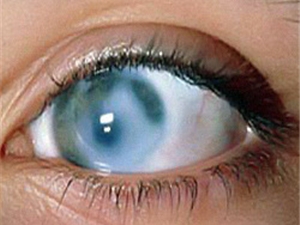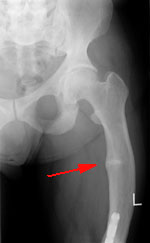How to cure diabetes mellitus
Diabetes mellitus is a chronic disease which as a rule is caused by genetic conditions and characterized by a violation of all types of metabolism especially carbohydrate. For diabetes is characterized by chronic hyperglycemia (increased blood glucose) and glycosuria in terms of presence of glucose in urine due to insulin deficiency which is most often a relative and absolute.
World Health Organization in 1981 has given a definition of diabetes like a state of chronic hyperglycemia which may develop as a result of exogenous and causes genetic factors that complement each other.
Thus, the most important feature of diabetes is increasing blood sugar levels known also as hyperglycemia. The content of sugar in the blood of healthy human fasting 3.33 – 5.55 mg / dL.
Also, it is well known that a leading role in carbohydrate metabolism plays a pancreas performs two main functions:
- exocrine which is production of digestive enzymes and which fall on the pancreatic duct into the duodenum and are involved in digestion: break down proteins, fats and carbohydrates to less complex compounds, and then be absorbed into the bloodstream;
- internal secretion i.e. hormone in the so called “islets of Langerhans”;
These places in the body are unevenly distributed in the tissue of the pancreas and they distinguish four main types of cells known as Beta cells which produce insulin, Alpha calls which are in charge of glucagon, Delta cells for somatostatin and P cells for pancreatic.
Due to the total number of cells and their parameters for “health”, “full” and “quality” we can work out their insulin dependent cherished numbers of health from 3.33 to 5.55 mmol / l glucose in the blood.
Insulin is seen as the “key” for the penetration of glucose into the cells of the liver, brain, muscles i.e. the organs which are not able to function without glucose properly.
Blood glucose level is maintained in the main two hormones:
- insulin which is lowering it;
- glucagon which is increasing it.
If grossly interfere in nature – it severely punishes us diseases. The main factors contributing to, the development of diabetes are:
-
1) Refined foods of modern man, is deprived of crude fiber, forced to work the intestine, impeding absorbability of fats, cholesterol, lipids, and consequently prevents the development of atherosclerosis, unloads insulin y apparatus;
2) humanity has less to move and increase the mass of his body for tens of kilograms;
3) humanity lives in conditions of constant stress;
4) simply overeating;
5) breathing fire and eating masses of chemicals;
6) adverse effects of some drugs on carbohydrate metabolism;
7) cells of the pancreas are sensitive to different viruses.
The twentieth century gave people insulin and hypoglycemic agents which can not only extended but really has saved millions of lives and made it possible for people affected by diabetes but just to live, work actively, make love and have children.
Establish a genetic predisposition to diabetes
The frequency of diabetes mellitus type I in the 0,2 – 0, 3% of the population. In families where one child is suffering from diabetes type I, his brother or sister of risk to get diabetes about 5%. In families where the father has Type I diabetes risk of the disease, 5 – 10%. If the mother is ill, the risk of disease in children 2.5 – 5%. The risk of developing type I diabetes mellitus is higher in those families in which there is diabetes, a third child’s risk to get 10%. In the case of type I diabetes mellitus in relatives of 2 nd degree relatives (uncle, aunt, grandchild) the risk of developing diabetes mellitus 1 – 2%.
The frequency of diabetes mellitus type II is higher than type I diabetes. Among the relatives of the patient with diabetes mellitus type II diabetes risk 25 – 30%, and if both parents have type II diabetes, the risk of developing diabetes in their children after the age of 40 years – 65 – 75%.
Folk methods for treatment and relief
1. Salad of beets and carrots with oranges
Requires: 4 beets 1 carrot 4 cloves of garlic, 0.3 liters of water, 1 orange, 1 teaspoon lemon juice, 4 tablespoons sour cream, 2 tablespoons chopped dill.
Preparation. Take raw beets which are cleaned and rubbed on a coarse grater, add lemon juice. Carrot shred straw to be mixed with beets and pour hot water bringing to a boil at the end. Then the stuff has to be cool. Serve with oranges, sour cream, minced garlic, dill.
2. Cowberry juice
Washed berries are to be poured in boiled water (2 cups of water per 700 g of berries) forl 10 minutes to be rub the berries with the pestle and sieve. Juice has to be filled with Xylitol, Sorbitol or saharitom. Is chilled on 1/2–1 glasses a day.
3.Drink “Autumn”
In brine sauerkraut pour tomato juice, squeeze the juice of half a lemon there, add removed from 1 / 4 lemon zest crushed, cooled boiled water, salt to taste. Stir well. Serve chilled.
For 6 servings: 1 / 2 liters of brine, 1 / 2 liters of juice, 1 / 2 lemon, 1 / 2 cup water.
4.Tomato drink with cheese
You need for 1 serving the following: 2 tablespoons of tomato juice, 50 grams grated cheese, 1 / 2 cup of cold milk.
Preparation. In blender pour grated cheese, pour the tomato juice and cold milk and beat for 1 minute. Serve well chilled.
5. Carrot Cocktail
Required for 4 servings: 2 cups of carrot juice, 2 oranges, 1 lemon, 2 teaspoons honey, 1 cup yogurt or sour milk, 4 – 8 cubes of edible ice.
Preparation. In a mixer whip the good carrot, orange and lemon juices, yogurt or fermented baked milk, honey.

Posted in Hormones and Metabolism | No Comments »



